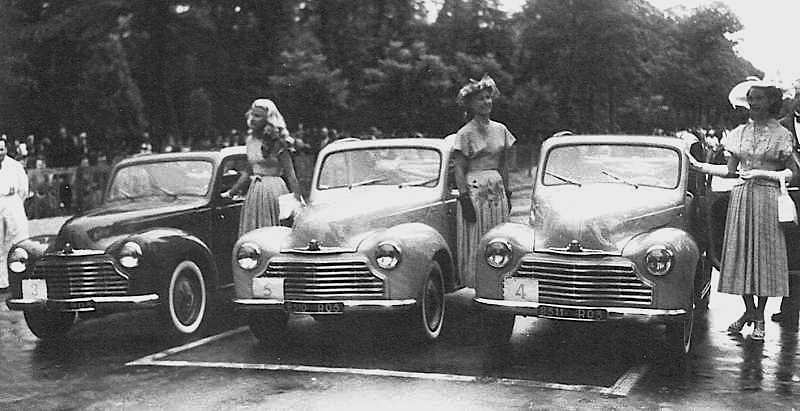The Hudson Jet Wikipedia entry mentions some of the decisions that affected the car's appearance. Fundamentally, it was too narrow and probably a little too high. It looked somewhat similar to 1952 Fords that were much better proportioned. I could quibble about some of the details such as the grille bar, but see no point to doing so given the bad overall proportions dictated by the package Hudson management insisted on.
Other observers have suggested that Hudson should have put the Jet's development money into a V-8 motor (Hudsons were powered by straight-sixes) and restyling the standard Hudson line. Even a well-design Jet might have failed in the marketplace because the American car-buying public was about five or six years away from becoming enthused about smaller cars (Nash Ramblers at the time were at best a niche-success). And Hudson was doomed anyway, along with other smaller American car builders such as Packard and Studebaker that died in the late 1950s and mid-60s.
Publicity photo of a Hudson Jet posed by a U.S. Air Force F-94 jet interceptor.
Factory photo of a Jet. In those days images such as this were often retouched to remove unwanted reflections and firm up details. This was to achieve better results when screened for low-quality newspaper reproduction.
Jet ad card showing a Super Jet.
Rear-view illustration from an advertisement or brochure.
1954 super Jet.
1954 Jet Liner, top of the line. The chromed ensemble on the rear fender area is somewhat similar to that on full-size 1954 Hudsons.
1954 Hudson Jet Club Sedan. The lowest-priced Jet of all. Two doors. No side trim. Windshield and backlight trim is rubber, not chromed strips. That's the Hudson administration building in the background.





























